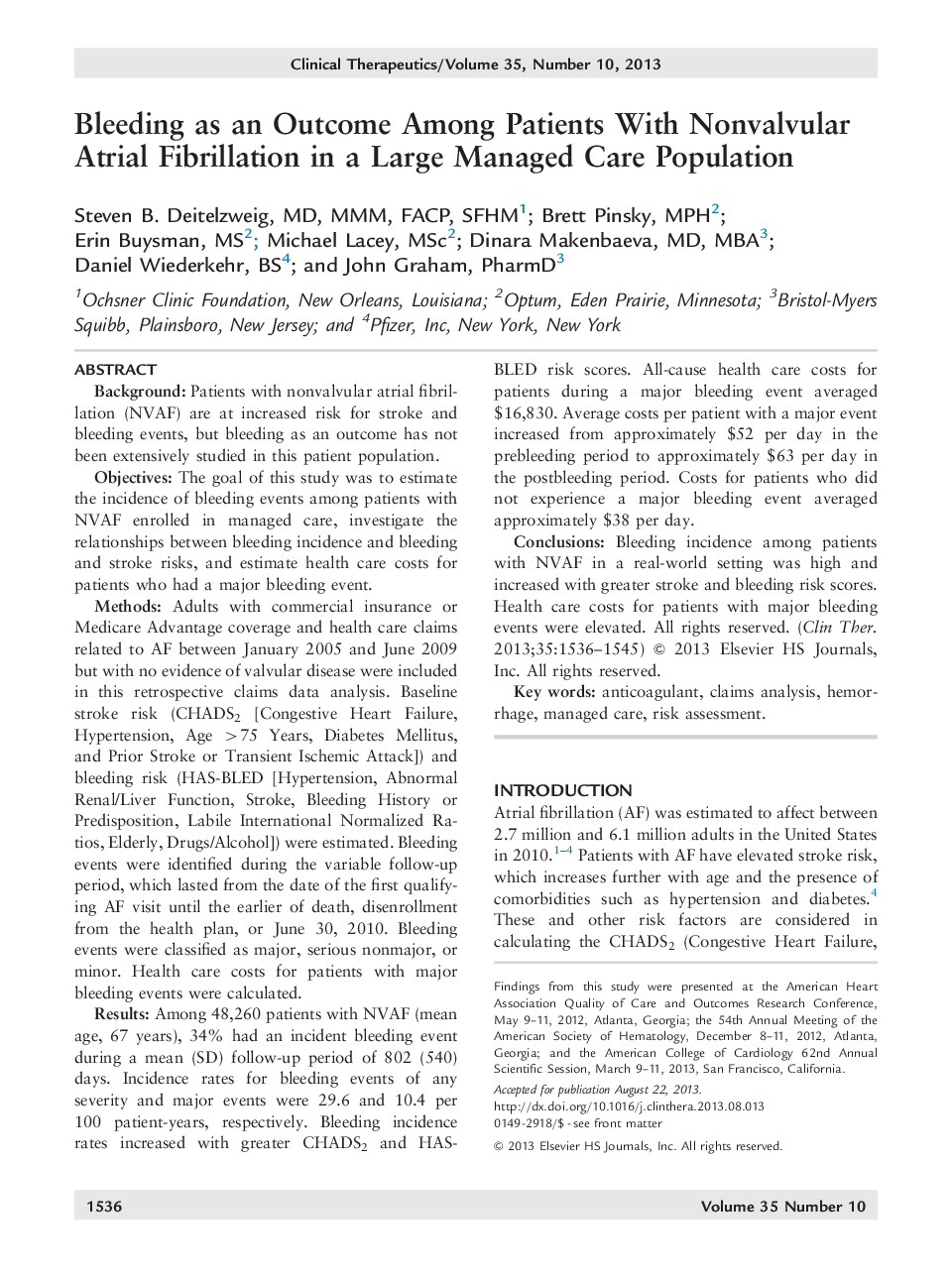| Article ID | Journal | Published Year | Pages | File Type |
|---|---|---|---|---|
| 5825626 | Clinical Therapeutics | 2013 | 11 Pages |
BackgroundPatients with nonvalvular atrial fibrillation (NVAF) are at increased risk for stroke and bleeding events, but bleeding as an outcome has not been extensively studied in this patient population.ObjectivesThe goal of this study was to estimate the incidence of bleeding events among patients with NVAF enrolled in managed care, investigate the relationships between bleeding incidence and bleeding and stroke risks, and estimate health care costs for patients who had a major bleeding event.MethodsAdults with commercial insurance or Medicare Advantage coverage and health care claims related to AF between January 2005 and June 2009 but with no evidence of valvular disease were included in this retrospective claims data analysis. Baseline stroke risk (CHADS2 [Congestive Heart Failure, Hypertension, Age >75 Years, Diabetes Mellitus, and Prior Stroke or Transient Ischemic Attack]) and bleeding risk (HAS-BLED [Hypertension, Abnormal Renal/Liver Function, Stroke, Bleeding History or Predisposition, Labile International Normalized Ratios, Elderly, Drugs/Alcohol]) were estimated. Bleeding events were identified during the variable follow-up period, which lasted from the date of the first qualifying AF visit until the earlier of death, disenrollment from the health plan, or June 30, 2010. Bleeding events were classified as major, serious nonmajor, or minor. Health care costs for patients with major bleeding events were calculated.ResultsAmong 48,260 patients with NVAF (mean age, 67 years), 34% had an incident bleeding event during a mean (SD) follow-up period of 802 (540) days. Incidence rates for bleeding events of any severity and major events were 29.6 and 10.4 per 100 patient-years, respectively. Bleeding incidence rates increased with greater CHADS2 and HAS-BLED risk scores. All-cause health care costs for patients during a major bleeding event averaged $16,830. Average costs per patient with a major event increased from approximately $52 per day in the prebleeding period to approximately $63 per day in the postbleeding period. Costs for patients who did not experience a major bleeding event averaged approximately $38 per day.ConclusionsBleeding incidence among patients with NVAF in a real-world setting was high and increased with greater stroke and bleeding risk scores. Health care costs for patients with major bleeding events were elevated. All rights reserved.
